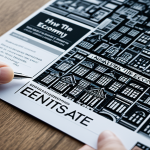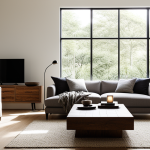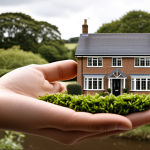Essential Steps to Ensure a Pet-Safe Garden in the UK
Designing a pet-safe garden UK requires careful attention to common hazards found in typical UK gardens. Many popular plants, chemicals, and garden features can pose risks to dogs and cats. To promote garden safety for pets, it’s vital to begin by identifying potential dangers such as poisonous plants, sharp tools, and toxic chemicals frequently used in standard gardening.
Creating a safe garden design means arranging the layout to minimise these risks. For example, paths should be clear and free from obstructive debris, while flower beds with potentially toxic plants must be out of easy reach. Similarly, areas with fertilizers or pesticides should be inaccessible to pets. Dogs, known for their digging habits, benefit from designated digging zones to discourage destructive behavior elsewhere.
Also to read : What are essential pet care tips for UK winters?
A practical step-by-step pet safety checklist for UK gardens might include:
- Inspecting the garden for toxic plants and replacing them with pet-safe alternatives
- Securing compost heaps and rubbish bins to prevent accidental ingestion
- Using non-toxic pest control methods and avoiding harmful chemicals
- Ensuring water sources are safe, clean, and easily accessible
By following these steps, UK pet owners can create an outdoor space that balances natural beauty with protection, fostering both the health and happiness of their pets.
Also read : How Can UK Pet Owners Make Sustainable Choices for Their Pets?
Choosing Pet-Safe Plants and Avoiding Toxic Species
Selecting pet-safe plants UK is crucial for creating a garden where your pets can explore without risk. Common toxic garden plants UK that pet owners should avoid include foxglove, lilies, and rhododendrons, as these can cause serious health issues if ingested by dogs or cats. Instead, consider safe plants for dogs and cats such as lavender, marigolds, and rosemary, which add beauty without danger.
To ensure you’re choosing non-toxic landscaping options, research reliable sources that list plant toxicity specifically for pets. Sources often provide clear indications which species are hazardous and suggest safe alternatives. For example, replacing toxic azaleas with pet-friendly ferns can maintain greenery while improving garden safety for pets.
Practical planting tips for UK pet owners include planting in raised beds or pots to limit access, especially for curious dogs. Grouping pet-safe plants in common play areas encourages exploration in safer zones. Mulching with pet-safe materials like wood chips instead of cocoa bean mulch, which is toxic to dogs, further enhances safety. These thoughtful choices in safe garden design help UK pet owners enjoy a secure and vibrant outdoor space.
Securing Fencing and Boundaries to Prevent Escapes
Creating pet-safe fencing UK is vital for garden safety for pets, especially to prevent escapes. Dogs and cats can squeeze through or dig under fences, so choosing the right materials and design is essential. Sturdy wooden panels or metal mesh fencing provide durable barriers suitable for the UK climate. For cats, adding overhanging sections or cat-proof netting helps prevent climbing escapes.
Regular inspection is critical. UK pet owners should check for gaps at the base or between panels where pets might slip through. Addressing digging risks involves burying fence bottoms or installing underground barriers to deter dogs from tunneling. Maintenance includes repairing loose boards and rusted fixtures promptly to maintain secure garden fencing.
Local regulations may impose height or style requirements for fencing to ensure neighbour safety and comply with council rules. UK pet owners should verify guidelines to avoid legal issues while enhancing pet escape prevention measures. Implementing these precautions not only secures pets within the garden but also supports a peaceful neighbourhood by reducing the risk of wandering pets and potential accidents.
By combining durable materials, careful design, and regular upkeep, a pet-safe garden UK becomes a secure haven where pets can freely play without risk of running off or encountering dangers outside the property.
Using Non-Toxic Pest Control and Lawn Treatments
Ensuring garden safety for pets requires avoiding harmful chemicals commonly found in pest control and lawn care products. Many traditional pesticides and herbicides contain substances toxic to dogs and cats. For UK pet owners, opting for non-toxic pest control solutions is vital to create a truly pet-safe garden UK.
Common hazardous chemicals include organophosphates, carbamates, and synthetic pyrethroids, which can cause poisoning if ingested or absorbed through the skin. Instead, pet-friendly options use natural ingredients like neem oil, diatomaceous earth, or biological controls such as beneficial insects. These methods effectively manage pests without endangering your pets.
Safe lawn treatments focus on pet-friendly fertilizers and moss control products free from harmful chemicals. Applying these treatments following manufacturer instructions and keeping pets off treated areas until fully dry further enhances safety.
Practices such as manual weed removal and encouraging healthy soil and plant diversity reduce pest issues naturally. Regular monitoring allows early detection, minimizing the need for chemical use. By prioritizing safe garden chemicals for pets and embracing pet-friendly pest solutions, UK pet owners protect their pets’ health while maintaining a thriving garden environment.
Essential Steps to Ensure a Pet-Safe Garden in the UK
Creating a pet-safe garden UK begins with accurately identifying common garden hazards that affect dogs and cats. Toxic plants, sharp tools, and chemical exposure pose significant risks. UK pet owners should conduct thorough inspections to spot these dangers early. For example, removing poisonous plants such as foxglove and replacing them with safer alternatives greatly reduces poisoning risks.
Garden safety for pets also involves designing the garden layout to minimise exposure to hazards. This includes establishing designated play areas clear of chemicals and installing barriers to keep pets away from compost heaps or storage of garden tools. Since dogs often dig, providing a specific digging zone can redirect this behaviour safely, protecting both pets and garden beds.
A practical pet safety checklist for UK gardens helps maintain ongoing vigilance:
- Regularly check and remove toxic plants
- Secure bins and compost heaps to prevent access
- Use non-toxic pest control methods only
- Ensure water sources are clean and accessible
By following these targeted steps, UK pet owners create a safe garden design where pets can enjoy outdoor freedom without unnecessary risk.
Essential Steps to Ensure a Pet-Safe Garden in the UK
Designing a pet-safe garden UK starts with recognising common hazards specific to local environments. UK pet owners must be vigilant about potential risks such as poisonous plants, unsafe chemicals, and accessible garden equipment. Identifying these hazards early is crucial for effective prevention.
A well-planned safe garden design minimises risks by zoning different areas thoughtfully. For instance, placing chemical storage and compost heaps in secure, inaccessible spots protects curious pets from harm. Providing distinct play areas encourages dogs and cats to explore safely while keeping hazardous zones off-limits.
UK pet owners can follow this concise safety checklist:
- Survey the garden for toxic plants and replace them promptly
- Lock away sharp tools and garden chemicals securely
- Establish digging zones to redirect destructive habits safely
- Ensure fresh drinking water is available throughout the garden
These practical steps boost garden safety for pets by combining hazard management with behavioural solutions. Regularly revisiting this checklist ensures the garden remains a secure, enjoyable space for pets to roam freely. Through attention to detail and thoughtful layout, a pet-safe garden UK can balance natural beauty with protection tailored to pets’ needs.






